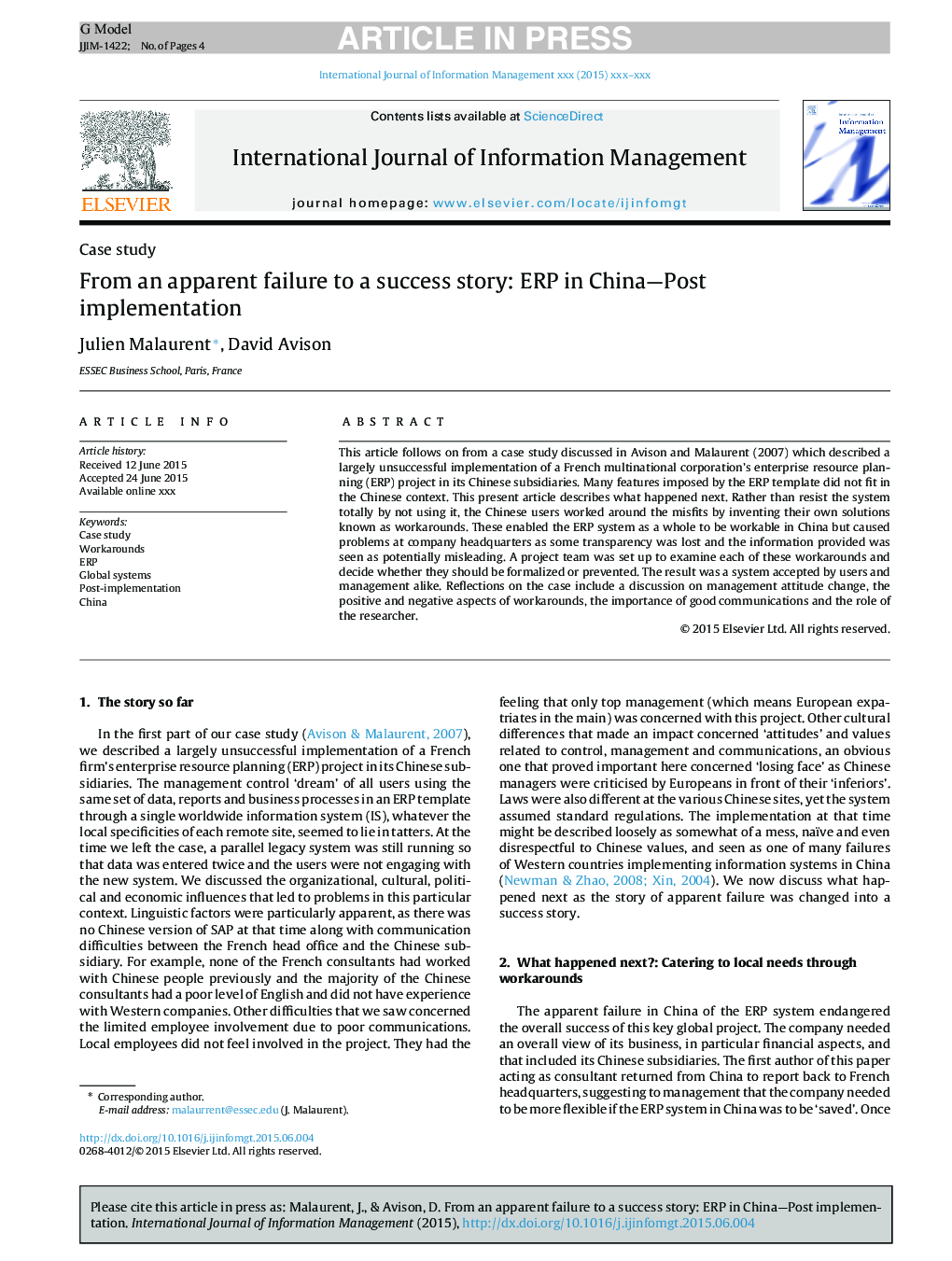| Article ID | Journal | Published Year | Pages | File Type |
|---|---|---|---|---|
| 7429095 | International Journal of Information Management | 2015 | 4 Pages |
Abstract
This article follows on from a case study discussed in Avison and Malaurent (2007) which described a largely unsuccessful implementation of a French multinational corporation's enterprise resource planning (ERP) project in its Chinese subsidiaries. Many features imposed by the ERP template did not fit in the Chinese context. This present article describes what happened next. Rather than resist the system totally by not using it, the Chinese users worked around the misfits by inventing their own solutions known as workarounds. These enabled the ERP system as a whole to be workable in China but caused problems at company headquarters as some transparency was lost and the information provided was seen as potentially misleading. A project team was set up to examine each of these workarounds and decide whether they should be formalized or prevented. The result was a system accepted by users and management alike. Reflections on the case include a discussion on management attitude change, the positive and negative aspects of workarounds, the importance of good communications and the role of the researcher.
Related Topics
Social Sciences and Humanities
Business, Management and Accounting
Management Information Systems
Authors
Julien Malaurent, David Avison,
